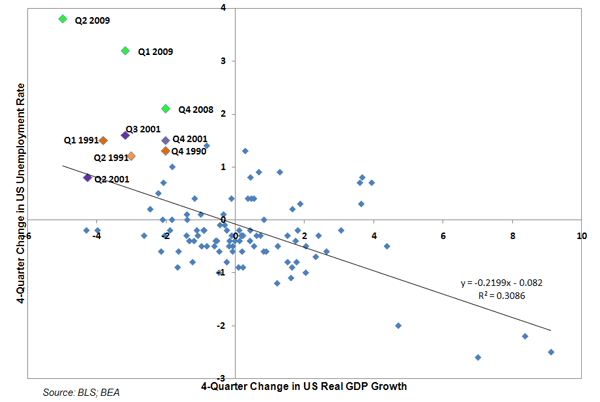Contents
The factors that affect the elasticity of demand are substitutes, necessity, and time. For example, if the price of apple increases, customers may switch to oranges. If it is a necessary good, which means people cannot live without them, then the product will have inelasticity in demand. Price elasticity measures the degree of responsiveness of quantity demanded of a commodity to a change in its price.

More consumers notice and react to price changes as time goes on, meaning price elasticity of demand tends to increase as time passes. There are several important factors that influence a https://1investing.in/ good’s price elasticity of demand. If the good has plenty of competitive substitutes, elasticity tends to be greater because consumers can easily make a switch when prices rise too much.
Factors That Affect the Price Elasticity of Demand
In economics, elasticity refers the degree to which individuals change their demand in response to price or income changes. Change in demand is a term used in economics to describe that there has been a change, or shift in, a market’s total demand. This is represented graphically in a price vs. quantity plane, and is a result of more/less entrants into the market, and the changing of consumer preferences. On the other hand, shorter any price change remains, the lesser is the price elasticity of demand. The longer any price change remains the greater is the price elasticity of demand. Elasticity at MID-POINT that connects the two points on the demand curve.
The conventional way of measuring elasticity is to look at the effect of price changes on the total revenue of business firm . If consumers buy 10 litre of petrol at Rs. 8 per litre, the total revenue is Rs. 80. There are two other concepts of elasticity, viz., market share elasticity and promotional elasticity .
E.g.- Higher taxes are imposed on the goods having INELASTIC DEMAND like cigarettes, liquor, etc. Some goods are demanded because they are used jointly with other goods. Such goods normally have inelastic demand as against goods having autonomous demand. If a consumer spends a small proportion of his income to purchase a commodity, the demand is inelastic.

Full BioPete Rathburn is a freelance writer, copy editor, and fact-checker with expertise in economics and personal finance. If the frequency of purchase is high then the demand tends to be inelastic. If the people are not habituated, then they go for a substitute and the demand becomes elastic.
The price elasticity of demand varies between different pairs of points along a linear demand curve. The lower the price and the greater the quantity demanded, the lower the absolute value of the price elasticity of demand. What happens to the price elasticity of demand when we travel along the demand curve? On a linear demand curve, such as the one in Figure 5.2 “Price Elasticities of Demand for a Linear Demand Curve”, elasticity becomes smaller as we travel downward and to the right. To calculate price elasticity, there is need to divide the proportionate of change in the quantity that is demanded by the proportion of change in the price. Elasticity of Demand, on the other hand, specifically measures the effect of change in an economic variable on the quantity demanded of a product.
The absolute value of the price elasticity of demand is thus relatively large. Between points C and D, for example, the price elasticity of demand is −1.00, and between points E and F the price elasticity of demand is −0.33. The lower the price elasticity of demand, the less responsive the quantity demanded is given a change in price. When the price elasticity of demand is less than one, the good is considered to show inelastic demand. When the quantity demanded does not respond to a change in price, it is said that demand is perfectly inelastic.
Demand & Elasticities
If quantity demanded changes by a larger percentage than price (i.e., if demand is price elastic), total revenue will change in the direction of the quantity change. If price changes by a larger percentage than quantity demanded (i.e., if demand is price inelastic), total revenue will move in the direction of the price change. If price and quantity demanded change by the same percentage (i.e., if demand is unit price elastic), then total revenue does not change. The slope of a line is the change in the value of the variable on the vertical axis divided by the change in the value of the variable on the horizontal axis between two points. The slope of a demand curve, for example, is the ratio of the change in price to the change in quantity between two points on the curve.
The demand for a commodity depends on a number of variables like the price of the commodity, the income of the buyers, prices of related goods and son on. A well-known slipper company sells 2,000 pairs of their flagship model, which retails for $100, each month. The company chooses to cut the cost of the slipper by 20%, from $100 to $80.

For San Francisco and Israel combined, the elasticity was between −0.26 and −0.33. The arc elasticity method has the advantage that it yields the same elasticity whether we go from point A to point B or from point B to point A. Many of the firms spend huge amounts every year on advertising their products to boost up sales. There is a direct relationship between the extent of advertisement and volume of sales. As regards a particular firm, the market share elasticity is most important.
Cross Price Elasticity of Demand
For most countries, price elasticity of demand for crude oil tends to be greater in the long run than in the short run. Unlike the aforementioned types of demand, relatively elastic demand has a practical application as many goods respond in the same manner when there is a price change. The degree of elasticity of demand helps to define the slope and shape of the demand curve. Therefore, we can determine the elasticity of demand by looking at the slope of the demand curve.
- The demand curve for a perfectly inelastic demand is a vertical line i.e. the slope of the curve is zero.
- The slope of the demand curve downwards to the right indicates negative cross elasticity.
- The demand can plummet depending upon the economy and the overall financial situation of consumers.
- Using the income effect and the income elasticity of demand, you can determine whether a good is a normal or inferior good.
If the income elasticity is greater than one, the sales of his goods will increase more quickly than general economic development. If the income elasticity is greater than zero but less than one, sales of the goods will increase but at a lower rate than economic development. The advertising elasticity of demand depends upon the time interval between advertising expenditure and its effect on sales. This depends on general economic environment, selected media and type of the product.
This is explained in Fig.7 where with the rise in the price of Y from OY to OY1 the demand for X falls from OX to OX1. The slope of the demand curve downwards to the right indicates negative cross elasticity. The law of demand states that an increase in price reduces the quantity demanded, and it is why demand curves are downwards sloping unless the good is a Giffen good. If close substitutes for the commodity are available, the demand for the commodity will be elastic. The reason is that even a small rise in its prices will induce the buyers to go for its substitutes.
For discrete or once-for-all P change, we make use of the above formula. However, as a special case of arc elasticity we may use the concept of point elasticity. For small P and Q changes, Ep can be calculated for a point on the demand function, so as to be called point price elasticity.
The cross elasticity between two goods, whether substitutes or complementaries, is only a one-way traffic. The cross elasticity between butter and jam may not be the same as the cross elasticity of jam to butter. A 10% fall in the price of butter may cause a fall in the demand for jam by 5%. The elasticity of demand is the degree of responsiveness of demand to change in price. In the long term, consumers are more elastic over longer periods, as over the long term after a price increase of a good, they will find acceptable and less costly substitutes. The price elasticity of demand is lower if the good is something the consumer needs, such as Insulin.
The price elasticity of demand is the ratio of the percentage change in quantity to the percentage change in price. As we will see, when computing elasticity at different points on a linear demand curve, the slope is constant—that is, it does not change—but the value for elasticity will change. Income elasticity measures the ratio of percentage change in quantity demanded to percentage change in income. A positive income elasticity suggests a more than proportionate increase in expenditure with an increase in income. If income elasticity is negative it implies that the commodity is inferior. If a change in price comes with the same proportional change in the quantity demanded, it is said that the good is unit elastic.
The decline in annual incomes for the majority of the population might cause luxury items to become more elastic. In other words, a recession might cause people to save their money rather than splurge on luxury items such as flat-screen televisions or expensive watches. A good that has a high demand elasticity for an economic variable means that consumer demand for that good is more responsive to changes in the variable. Conversely, a good with low demand elasticity means that regardless of changes in an economic variable, consumers don’t adjust their spending patterns. Goods like imported cars, high-end mobiles, refrigerators, LED TVs are costly in nature.
Perfect inelastic demand: EP = 0
When the demand is perfect elastic, it drops to zero in the face of a minimal price increase. If the price is the same of below the point where the demand touches the vertical axis, the market will demand all the quantity offered. Up to here, we elasticity of demand for comfort goods are have pointed out different types of elasticity according to the function we are analyzing, and according to the inputs we are considering. Now we will see how the supply and the demand can be classified according to the value of the elasticity.
Importance Of Branding For Business
Farmers’ products are less income elastic because they cannot generally bring variety in their products like income elastic products. Hence, in the coming years the danger of such agricultural problems is likely to remain particularly in developing countries. Therefore, the Government of India has considered it necessary to continue and increase various agricultural subsidies. This grouping of commodities depends upon the income level of a country.
